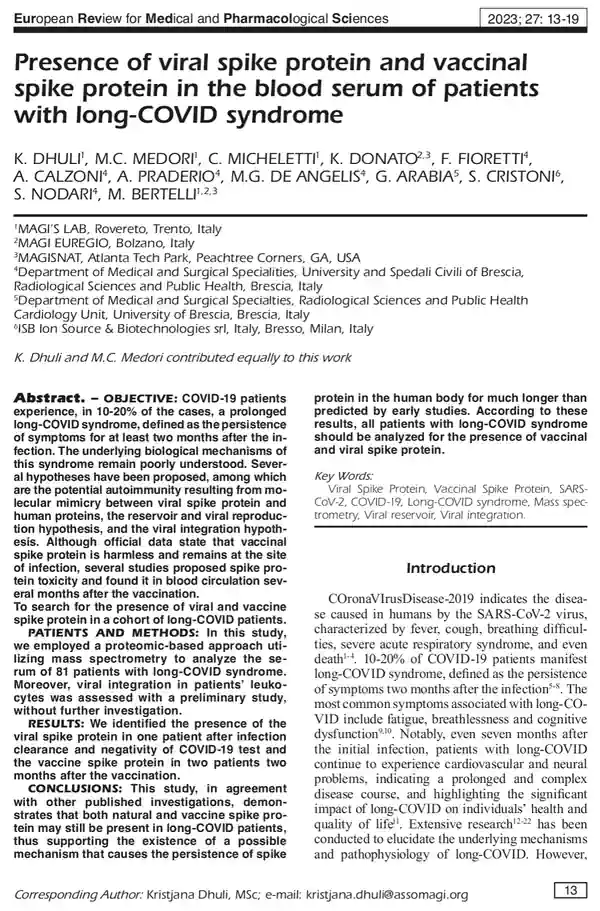013-019-2_231223_083904
Abstract. – OBJECTIVE: COVID-19 patients
experience, in 10-20% of the cases, a prolonged
long-COVID syndrome, defined as the persistence
of symptoms for at least two months after the in-
fection. The underlying biological mechanisms of
this syndrome remain poorly understood. Sever-
al hypotheses have been proposed, among which
are the potential autoimmunity resulting from mo-
lecular mimicry between viral spike protein and
human proteins, the reservoir and viral reproduc-
tion hypothesis, and the viral integration hypoth-
esis. Although official data state that vaccinal
spike protein is harmless and remains at the site
of infection, several studies proposed spike pro-
tein toxicity and found it in blood circulation sev-
eral months after the vaccination.
To search for the presence of viral and vaccine
spike protein in a cohort of long-COVID patients.
PATIENTS AND METHODS: In this study,
we employed a proteomic-based approach uti-
lizing mass spectrometry to analyze the se-
rum of 81 patients with long-COVID syndrome.
Moreover, viral integration in patients’ leuko-
cytes was assessed with a preliminary study,
without further investigation.
RESULTS: We identified the presence of the
viral spike protein in one patient after infection
clearance and negativity of COVID-19 test and
the vaccine spike protein in two patients two
months after the vaccination.
CONCLUSIONS: This study, in agreement
with other published investigations, demon-
strates that both natural and vaccine spike pro-
tein may still be present in long-COVID patients,
thus supporting the existence of a possible
mechanism that causes the persistence of spike
protein in the human body for much longer than
predicted by early studies. According to these
results, all patients with long-COVID syndrome
should be analyzed for the presence of vaccinal
and viral spike protein.

